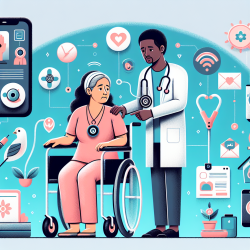The field of occupational health is constantly evolving, and staying informed about the latest research is crucial for practitioners aiming to improve their skills and the quality of care they provide. A recent study titled "Health-related quality of life in Chinese workers: a systematic review and meta-analysis" offers valuable insights that can be utilized to enhance practitioner capabilities and encourage further research.
Understanding Health-Related Quality of Life (HRQOL)
The World Health Organization (WHO) defines health-related quality of life (HRQOL) as individuals' perceptions of their position in life within the context of their culture and value systems. This includes their goals, expectations, standards, and concerns. HRQOL is not only linked to an individual's health status but also to their personal satisfaction. The study conducted a systematic review to synthesize HRQOL scores among Chinese workers using the WHO Quality of Life questionnaire.
Key Findings from the Study
- The study included 139 publications out of 1437 potential ones, focusing on various occupational groups across China.
- Pooled mean scores for HRQOL domains were reported as follows: physical domain (14.1), psychological domain (13.7), social relationship domain (14.0), and environment domain (12.3).
- No significant statistical differences were found between different subgroups such as gender, age, or occupation.
- The region was identified as a potential source of heterogeneity, with workers in northeast China reporting higher scores in the social relationship domain compared to those in central China who reported lower scores in the environmental domain.
Practical Applications for Practitioners
The findings from this study provide benchmarks that can serve as references for workplace health promotion programs not only in China but globally. Practitioners can use these benchmarks to assess and improve HRQOL among workers by:
- Identifying Vulnerable Groups: Focus on regions or occupational groups that report lower HRQOL scores to tailor interventions accordingly.
- Promoting Workplace Health: Implement programs that address specific domains where workers score lower, such as environmental improvements or social support systems.
- Cultural Sensitivity: Consider cultural factors when designing interventions to ensure they are effective and well-received by the target population.
The Need for Further Research
The study highlights the need for further research into regional differences and their impact on HRQOL. Practitioners are encouraged to explore these areas to develop more targeted and effective interventions. Additionally, understanding the role of occupational hazards specific to different industries can help refine strategies for improving worker well-being.
This comprehensive review provides a foundation for enhancing practitioner skills through evidence-based approaches. By applying these insights, practitioners can contribute significantly to improving the quality of life for workers across various sectors.










